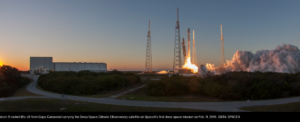EO Investment Picture: Worth More Than a Thousand Words
The Earth Observation (EO) market has been in constant evolution and recently, it has transitioned from costly, large EO satellites to smaller, more nimble ones flying as part of constellations. Using many small satellites is enabling real-time earth monitoring and observation, and with this, increasingly large amounts of data are being produced every day. Additionally,.



